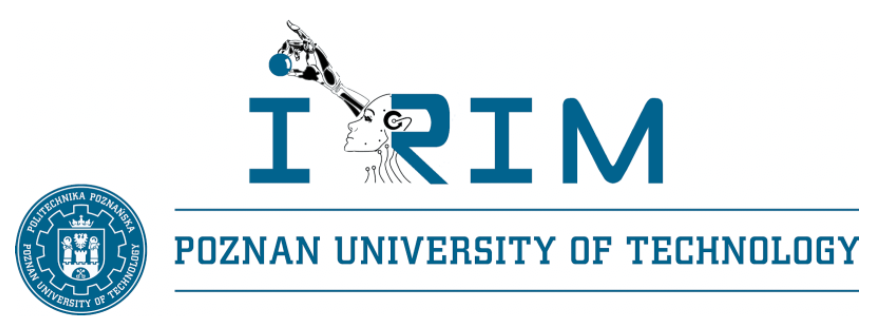Lab 05 - Camera: Cones classification
Robotics II
Poznan University of Technology, Institute of Robotics and Machine Intelligence

Laboratory 5: Cones classification using Camera sensor
Back to the course table of contents
In this course, you will train a classification algorithm as the next stage of object detection. Your classes will be in three colours: orange, blue and yellow cones.
Part I - train the cone classificator
First, follow the interactive tutorial. It uses the SqueezeNet model for object classification. Remember to save exported onnx model from the final step.
Part II - build the inference pipeline
Now, we use the detector from the previous course and the estimator from Part I to perform inference on real video from the onboard autonomous racecar.
Publishing video from file to ROS topic
Let’s download a splitted part of the move above and copy it into the docker container.
Run the ROS master instance.
roscoreRun the rviz tool
rosrun rviz rvizPublish video for camera_left topic
python scripts/publish_video.py ./kit19d.mp4 --width 608 --height 608 --fps 30Display video inside the rviz tool. Follow:
Add -> By topic -> /fsds/camera/cam_left -> Image -> OkIf all works, close the rviz node.
Cone classification inference
Note: Currently, your workspace is the
vision_detector.py file from the previous course.
Copy the
cone_clf.onnxmodel info the docker container. Verify the path to the model inconfig/config.yaml.Add to the vision script new class:
class ColorConeClf: def __init__(self, cone_clf_path): self.ort_sess = ort.InferenceSession(cone_clf_path, providers=['CPUExecutionProvider']) self.in_names = [inp.name for inp in self.ort_sess.get_inputs()] def preprocess(self, rois: np.ndarray) -> np.ndarray: #### TODO: fill the preprocess method return rois def predict(self, rois): rois = self.preprocess(rois) outputs = self.ort_sess.run(None, {self.in_names[0]: rois}) #### TODO: perform post-processing to get categorical output return labelsWrite the preprocess method:
- iterate over all ROIs and resize it to
(28, 40)resolution, - convert the list into NumPy array
- convert the type of array to
np.float32 - resize array values to <0,1> range
- iterate over all ROIs and resize it to
Write the post-process code inside
predictmethod:- convert one-shot representation into categorical values
Create
ColorConeClfinstance inVisionDetectorconstructor. It should getcone_clf_pathparameter.In
camera_detection_callbackfunction, between filtering andself.postprocess_conesdo:- convert values of
boxesto thenp.int32type, - loop over
boxesand crop ROIs fromimarray, - perform
predictmethod ofColorConeClf.
- convert values of
Update the boxes visualization loop to draw rectangles in the proper colour.
Launch the
vision_detectornode.
roslaunch fsds_roboticsII vision_detector.launch- And run the video publisher again.
Simulator recording
Download the rosbag recording from the simulator and move it into the container.
Launch the
vision_detectornode again.Replay the simulation. In the rosbag, the name of the video topic does not match our script. Therefore, we have to map it from right to left camera.
rosbag play ./cam_acc.bag /fsds/camera/cam_right:=/fsds/camera/cam_leftTASK
Your task is to draw the text “STOP” after the finish line. Simplify,
draw the text if all classes of boxes are changed from yellow/blue to
orange. Tips: * use np.all to handle NumPy logical
operations * use cv2.putText to add text on image
As a result, upload a screenshot at the finish line from the rviz tool to the eKursy platform.